Raised garden beds have become a staple in many home gardens and for a good reason. They offer several benefits, from improved drainage and pest control to aesthetics. Moreover, they can be built in various sizes and shapes using different materials, making them adaptable to all kinds of garden spaces and budgets.
When I bought a house in town several years ago, the backyard was one big water-sucking lawn. I began turning much of that lawn into garden areas the first summer I lived there and added a few more each year until the yard was mostly covered in growing spaces.
That’s it below, but by this particular point in the summer, everything was growing so well you can barely see the beds in the photo.
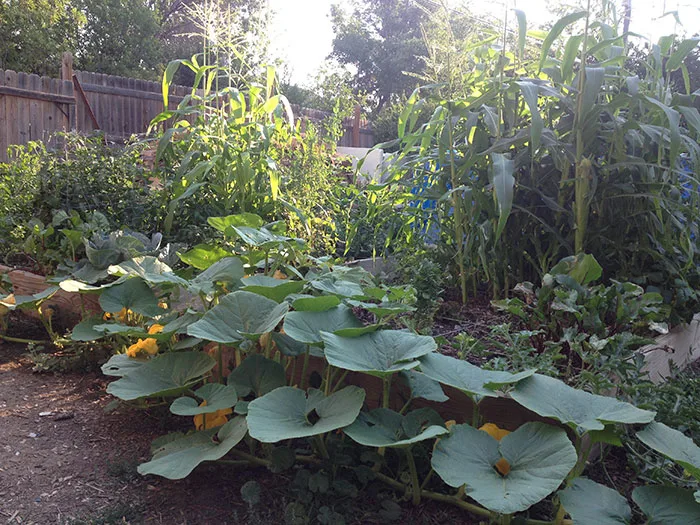
I have dogs and kids, so I knew that raised garden beds were the most practical solution for keeping little feet and paws from traipsing through freshly-planted areas, but I didn’t have a ton of money to invest in materials. Thus began my search for cheap raised garden bed ideas.
We’ve written about using upcycled materials for garden containers before, including the popular cinder block raised garden beds and wood pallet vertical gardens. In this post, we’ll explore some unconventional DIY raised garden bed ideas, including what I have had success with, and we’ll focus on utilizing cost-effective and reclaimed materials.
With a bit of creativity and elbow grease, you can transform these materials into beautiful and functional garden beds that will serve you season after season.
Understanding Raised Garden Beds
Raised garden beds are a bit like the VIP section of your garden club. They’ve been around for ages, adding an air of elegance and neatness to gardens while offering practical solutions to some common gardening problems. We’ve covered the benefits of raised bed gardening before, but here’s a quick recap:
Improved drainage and water retention
It seems counterintuitive to claim that raised beds can improve drainage and help with water retention, but it’s true. Over years of gardening, I’ve discovered that raised beds are the best way to completely control soil quality and create optimal conditions for plants.
Our soil sucks. Not literally (like water-sucking sandy soil) but figuratively. It’s heavy clay that becomes easily compacted and rock-hard when it dries.
It floods easily, and we all know that plants don’t like being waterlogged or bogged down in poor-draining soil. I do heavily amend the soil for my in-ground garden areas, but keeping conditions ideal in raised beds is so much easier.
Basically, if you live in an area with soil that doesn’t hold water, you can amend the soil in your raised beds to retain water while still draining properly. If you live in an area with crappy drainage, you can also amend your garden bed soil to solve that problem.
Just make sure your beds have drainage holes if you’re using any kind of enclosed container. You don’t want to ruin your hard work by flooding out your plants.
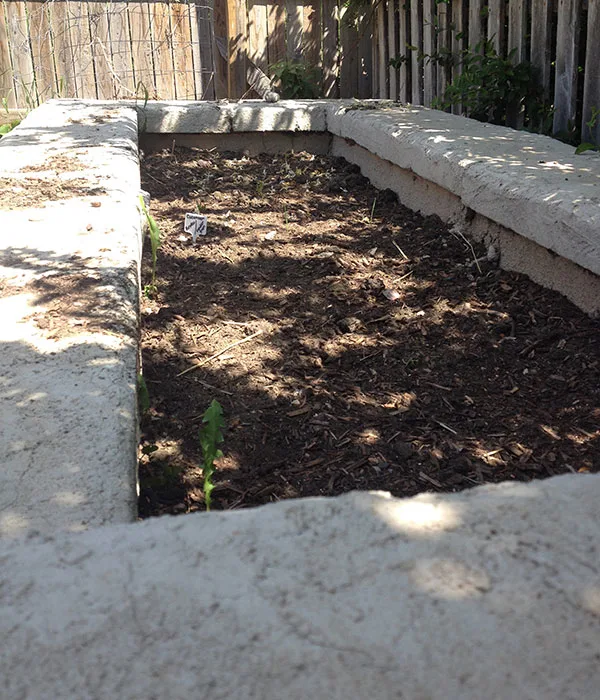
Extended growing season
The soil in raised beds warms up quicker in spring, allowing you to plant earlier. Moreover, you can easily add hoops and covers to many types of raised beds to protect plants in colder months, extending your growing time at the beginning and end of the growing season.
Easier on the back and knees
Gardening can be hard work, but raised beds can lessen the strain for those of us who aren’t getting any younger (or more flexible). Less bending and crouching = happy gardeners!
Raised beds can also make it possible for those with physical limitations to enjoy gardening.
Helps with pest and weed control
Some pests have difficulty reaching plants in raised beds (I’m talking about you, my little rabbit friends). Adding a few deterrents like copper tape or netting can further increase their effectiveness against persistent pests.
Raised beds are also easier to weed. A few stray weeds will always make their way into your raised beds, but they’re easy to stay on top of compared to their in-ground counterparts.
Raised beds look nice!
Raised beds can truly transform a garden and make it look more organized and aesthetically pleasing. The elevated plants, defined borders, and paths between the beds create a structured and tidy appearance that can enhance the overall beauty of any garden space.
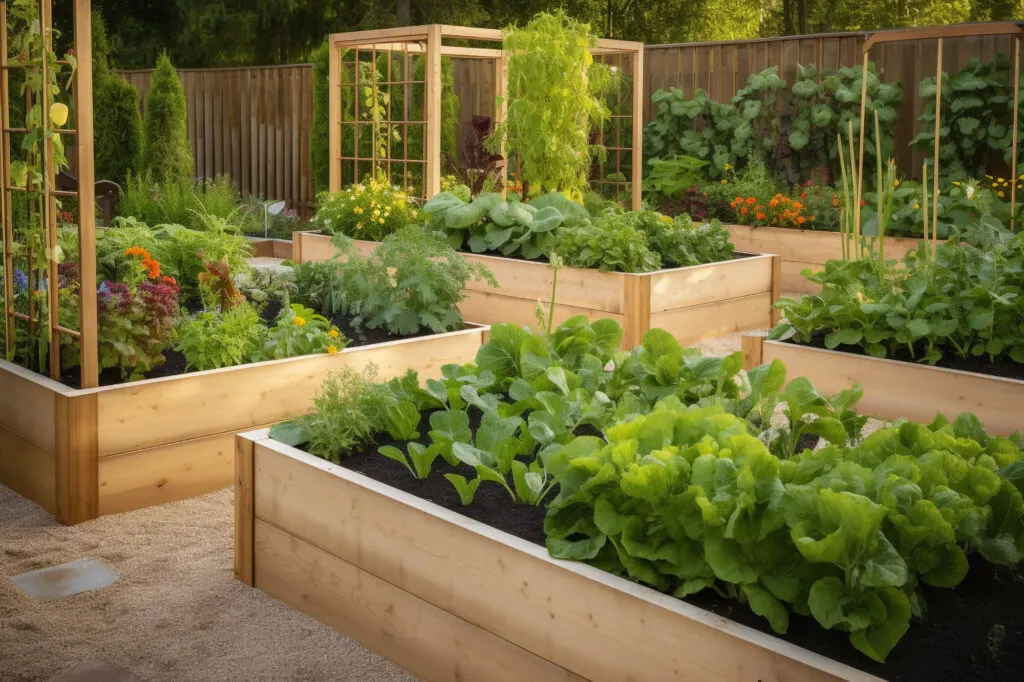
Factors to Consider When Building a Raised Garden Bed
Before you start building your raised garden bed, here are some key factors you should consider:
- Size and Depth: The size of your bed will largely depend on your garden’s size and the plants you wish to grow. Remember, you need to reach the center of the bed without stepping on the soil, so keep it to a manageable width.
- Location: Ideally, your raised bed should receive at least six hours of sunlight daily. Consider the sun’s position throughout the day and the shading from nearby structures or trees. Don’t be afraid to utilize shady spots, though. While plants like tomatoes and peppers thrive in full sun, delicate greens like lettuce can do very well in areas of your yard that stay partially shady.
- Materials to Use: You can use a wide range of materials to build raised beds. We’ll focus on cost-effective and easily accessible materials in the upcoming sections.
- Soil and Compost: Good soil is vital for a productive raised bed. A mix of topsoil, compost, and other organic matter usually works best for creating and maintaining good garden soil.
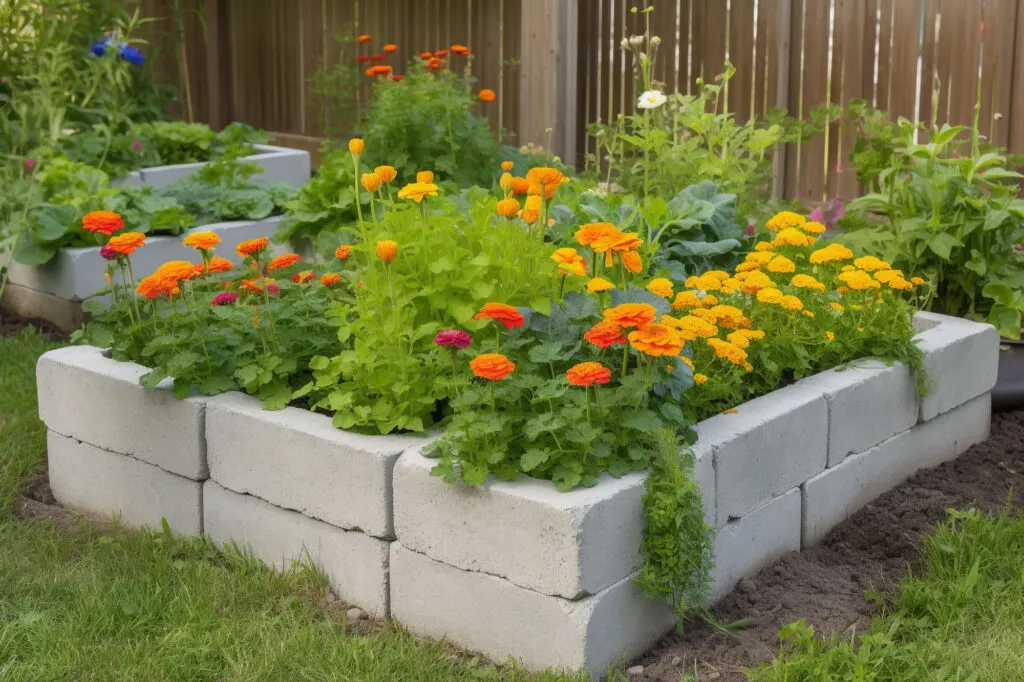
Materials You Can Use for DIY Raised Garden Beds
Before we dive into the world of (cheap) DIY raised garden beds, let’s get acquainted with the VIPs: the very important pieces (the materials).
Don’t fret; you won’t need to buy some high-end, extravagant supplies. Most of the materials can be found around your house, at the local thrift store, in the sale section of your favorite garden shop or hardware store, or in online marketplaces.
Don’t be afraid to think outside the traditional garden “box”; you can build a cheap raised garden bed out of almost anything.
Recycled and repurposed materials:
The world’s your oyster here! Old pallets, unused furniture, discarded tires – just about anything nontoxic and sturdy enough to hold soil can be turned into a garden bed. You can also upcycle materials from used building supply stores or construction sites (that’s how I got the foam blocks and reclaimed wood I mention below).
Natural materials:
Think logs, stones, willow branches, etc. They give your raised beds a rustic, back-to-nature vibe and can be available for free if you have land or know someone who does.
Be sure to check online marketplaces for natural materials, too; we’ve been able to get large rocks for free from people that want them removed from their property.
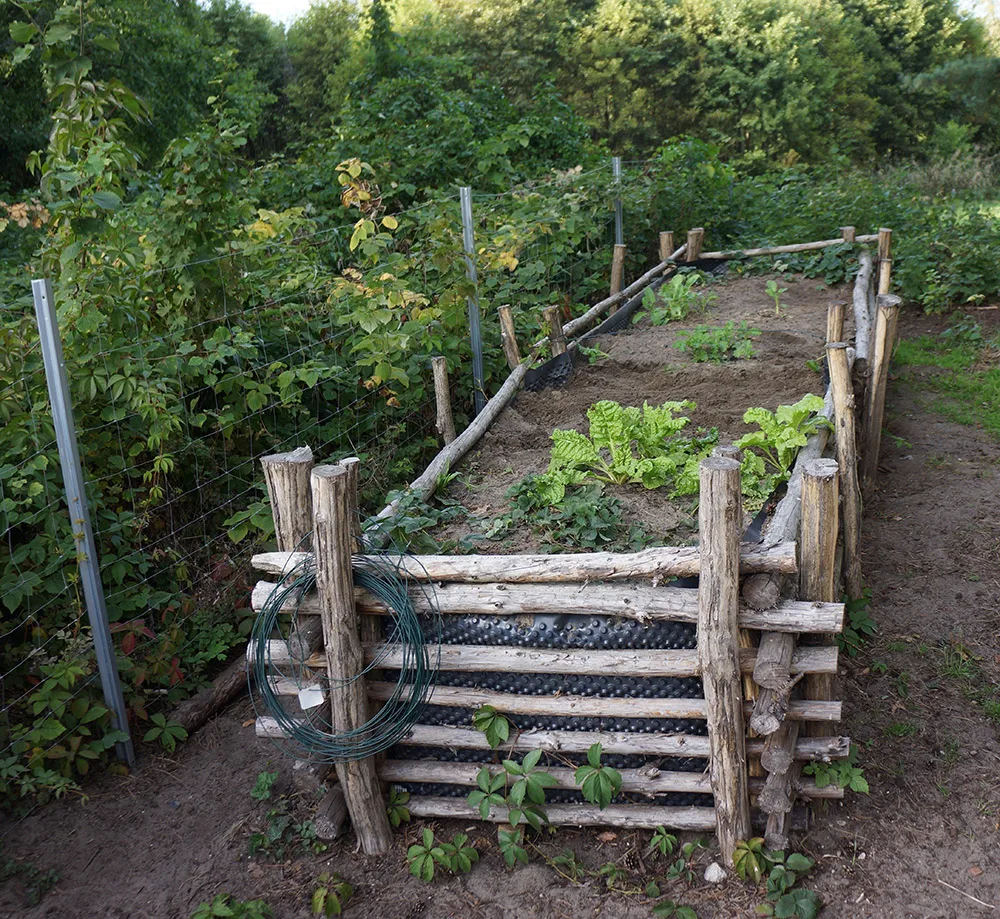
Purchased materials:
These include things like concrete blocks, lumber, corrugated metal sheets, and plastic containers. You can get these at a great price if you watch for sales. And don’t forget the fun of haggling at your local yard sales!
Armed with these considerations, you can start your DIY garden bed project. Here are some inexpensive raised garden bed ideas to get you started:
15 Cheap DIY Raised Garden Bed Ideas
1. Old pallet raised garden bed
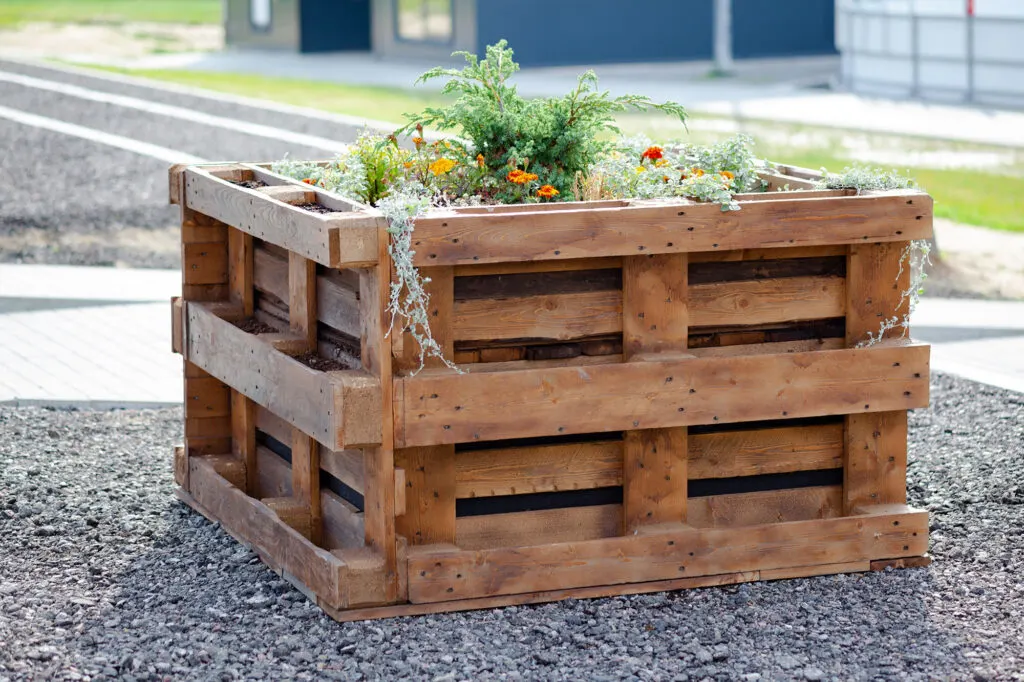
Yes, we love pallets. Pallets are like the Swiss Army knives of DIY projects. They’re plentiful, sturdy, and easy to work with. Plus, you can usually find them for free or at a very low cost. Just be sure they’re safe for use – no harmful chemicals that might leach into your soil.
If you are growing edibles like vegetables and herbs, you’ll want to ensure the pallet was heat treated and not chemically treated. Heat-treated pallets typically have an HT stamp on them somewhere.
Pallets are also super versatile. You can use them as vertical planters or build a big box planter out of them.
Depending on the type of raised bed and size of the slats in the pallet, you may need a way to keep dirt from escaping. Some people line the inside of the pallets with cheap wood, and some use landscaping fabric stapled to the inside of each pallet.
2. Concrete block/cinder block raised garden bed
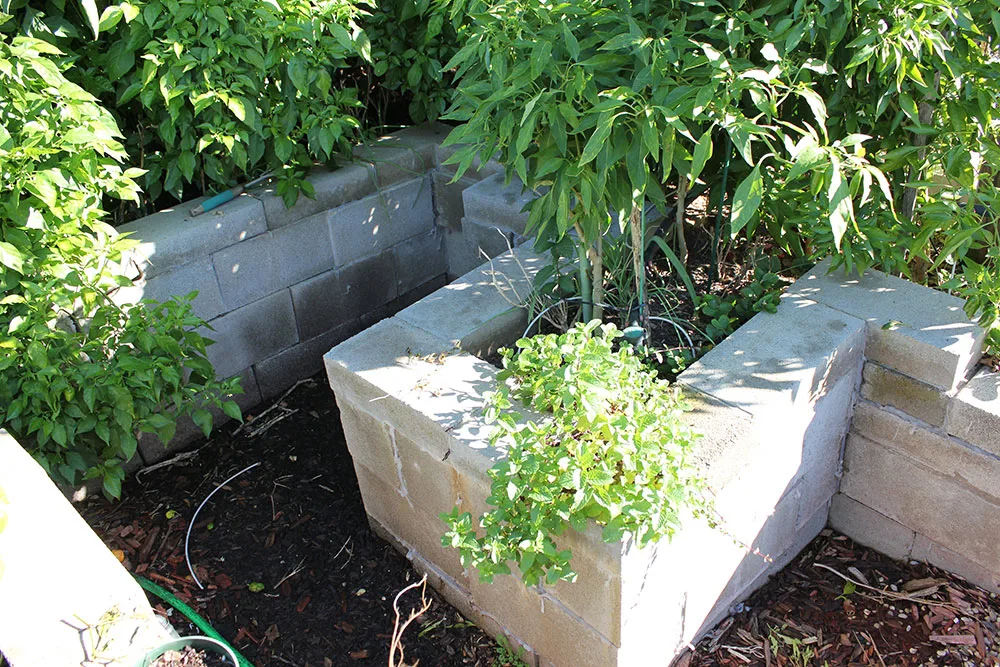
Next up we have the sturdy, practical, and versatile concrete/cinder block raised garden bed. Concrete blocks are affordable, easy to find, and surprisingly chic in an industrial way. Plus, their hollow centers can double as additional planting space. It’s like having a garden bed within a garden bed!
Cinder blocks will last nearly forever and you can often find them for free or very cheap from construction sites or online listings.
You may have heard that these blocks are unsafe for gardening, but modern concrete blocks are made of safe materials, unlike old cinder blocks that contain coal ash, which could leach chemicals into the soil.
Concrete blocks may leach lime into the soil over time, slightly increasing its pH, but this is not really a concern regarding food plants.
3. Garden beds made of old tires
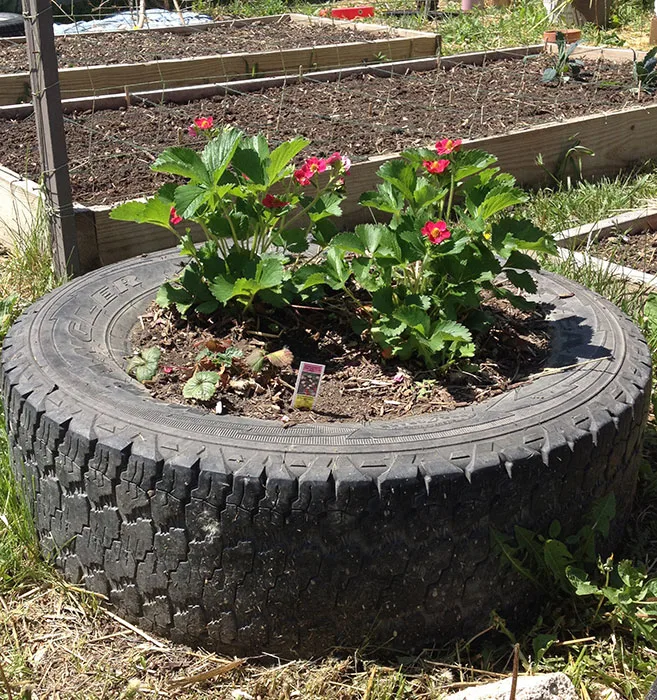
This might seem more unconventional, but picture this: old tires. Yes, you read it right! Tires make fantastic raised beds because they’re durable, retain heat (which plants love in cooler weather), and are a great way to upcycle.
One summer, I decided to try planting strawberries in tires as an experiment. Tires can be found just about anywhere for free and last forever, so why not plant stuff in them? I had a couple of them sitting around my yard, so I gave it a shot.
I know that strawberries are perennial and are pretty tough, but I had serious doubts about whether or not these would survive our South Dakota winters in a tire. Even on tough perennials, the plant roots need some protection over the winter (usually deep in the ground). And the winter following my strawberry experiment was cold. And long. And miserably COLD. As in many, many sub-zero weeks.
Not only did the strawberries survive their first winter, they thrived! Every spring, they came back and produced berries all summer long. So I doubled my little crop by adding more strawberries in a tire next to the first one.
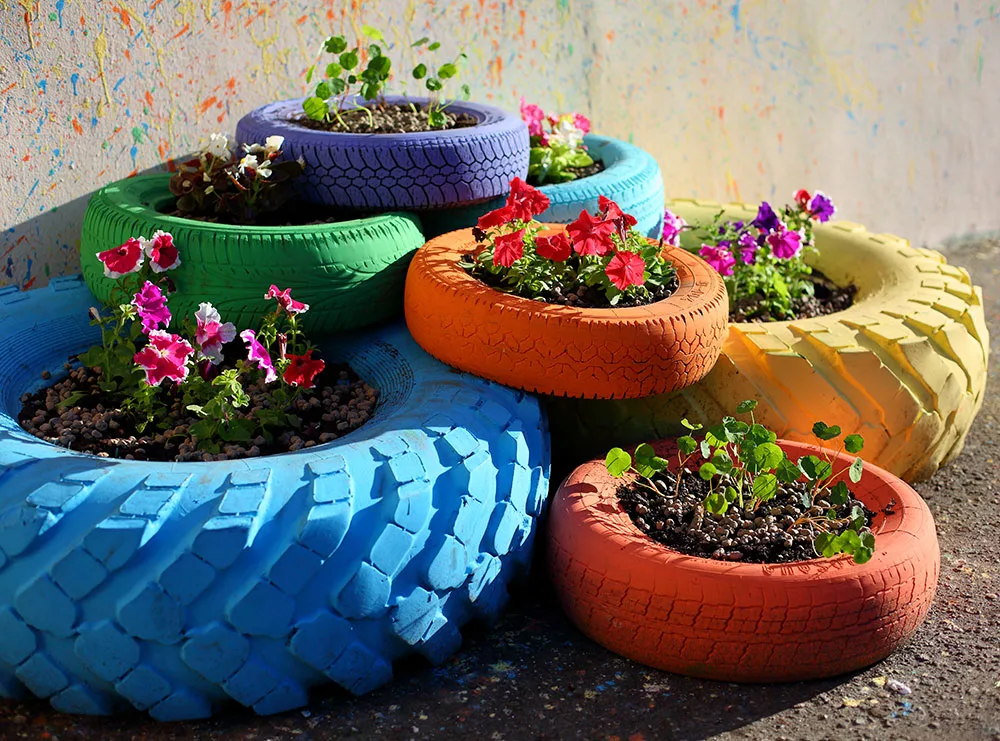
Now, there is quite a bit of controversy about whether or not tires are safe for growing foods. Frankly, it’s difficult to find a solid answer to this. I do not grow food plants in tires anymore, and I probably wouldn’t unless I had a way to line them with a safe material. If you have any doubt whatsoever about the safety of tires, don’t plant food plants in them. You can make pretty flower beds out of them instead.
4. Straw bale gardening
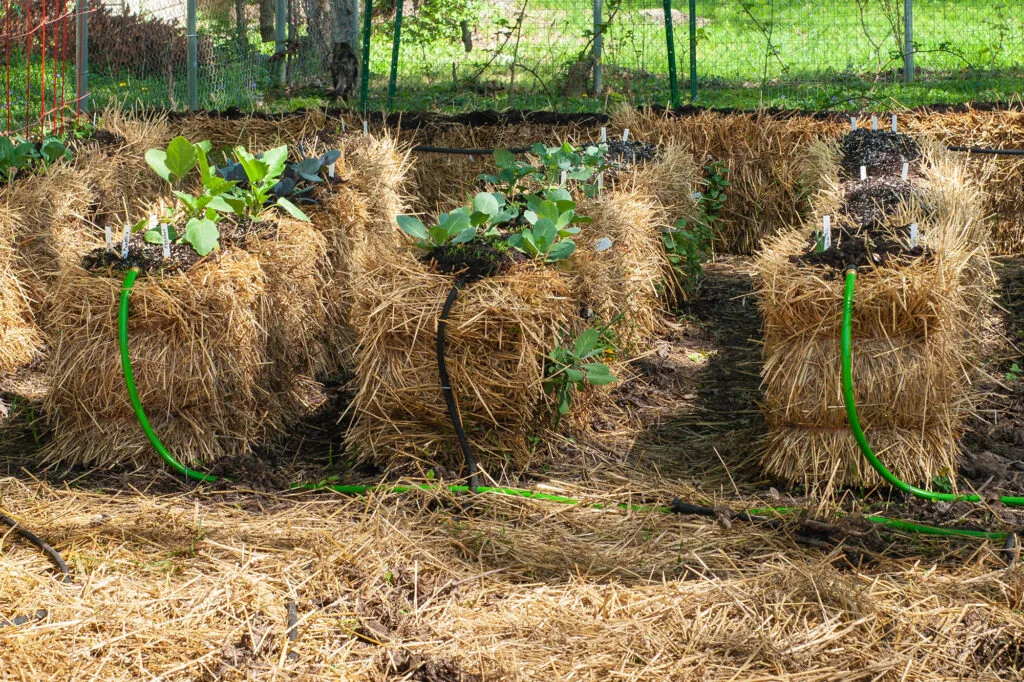
Straw bales can serve as both the walls of a raised bed or as the raised planter itself. They can be sourced from local farms or garden centers, usually pretty cheap.
To build a raised bed with straw bales as your border, arrange bales into whatever size and shape you want, fill the middle space with soil, and plant. The straw will break down over time, so this is more of a temporary option, but the straw will provide good mulch and compost for your garden area as it decomposes.
Another popular way to use straw bales for gardening is to plant directly into them. They will need to be conditioned first to prepare them for planting. Conditioning involves breaking down the straw to create a nutrient-rich growing medium.
To do this, you will need to thoroughly water the bales and apply nitrogen-rich fertilizer for a few days until the bales start to decompose. Once the straw begins to break down, you can add compost and other organic matter to create a fertile soil-like substance that is perfect for growing plants.
5. Old bathtub raised garden
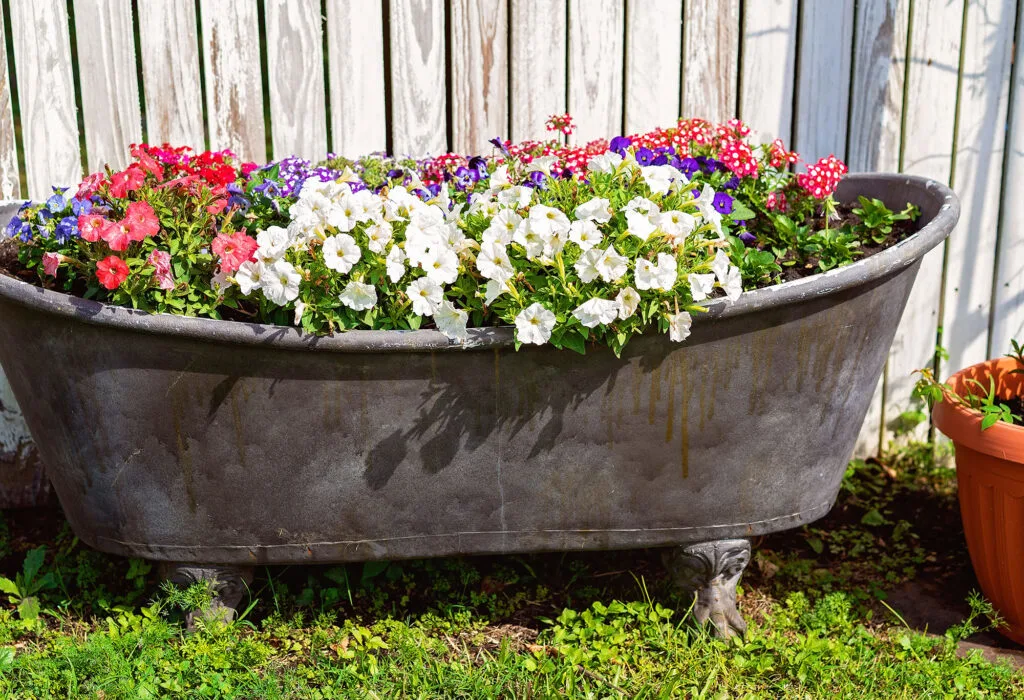
Old bathtubs can make charming, vintage-style raised beds if you want to get away from traditional garden boxes. They’re often available from home renovation sites, junk yards, and used building supply stores.
Bathtub planters are unique and cool, but using them as garden beds is also a great way to recycle and repurpose something old instead of letting it go to waste.
Be sure to drill drainage holes in the bottom (or use the obvious drain hole all bathtubs have) before adding your soil mix to keep excess water from accumulating.
6. Railroad ties raised gardens
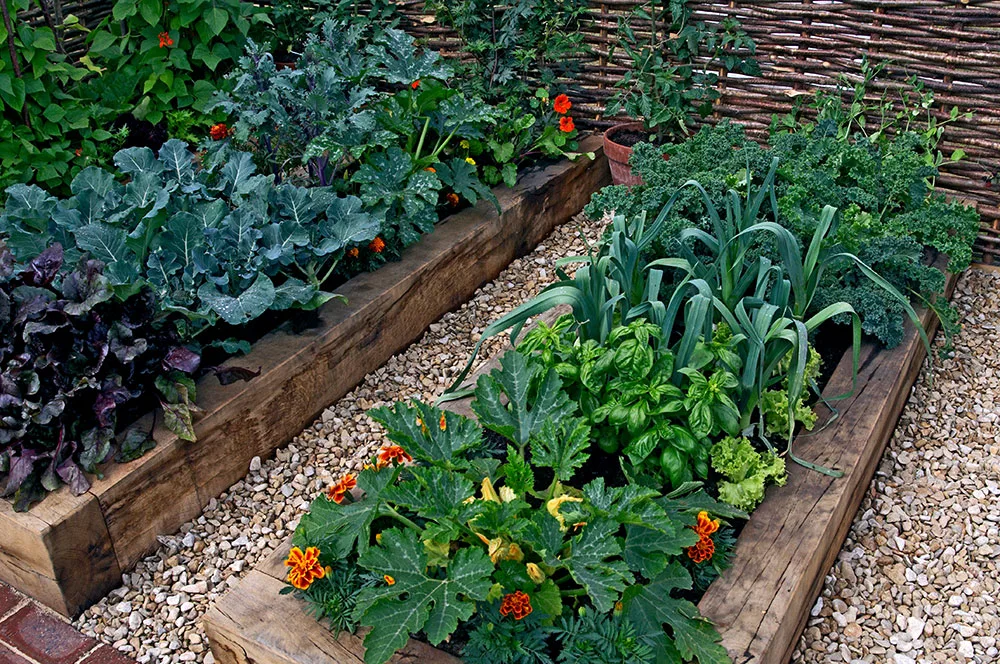
Using railroad ties as raised garden beds is a creative and affordable way to add some character to your garden. The durability of the ties makes them a long-lasting option for your gardening needs. However, older, treated ties may leach creosote, a harmful compound, so seek out untreated ties or use a liner to protect your soil and food plants.
Like most raised beds, begin by choosing a level area of your yard and measuring out the dimensions for your bed. Then, lay down a layer of landscape fabric, if desired, to prevent weeds from growing up through the bed.
Next, position the railroad ties in the desired shape and use rebar or stakes to anchor them in place. Fill the bed with soil and compost, and you’re ready to start planting!
7. Stock tank garden beds
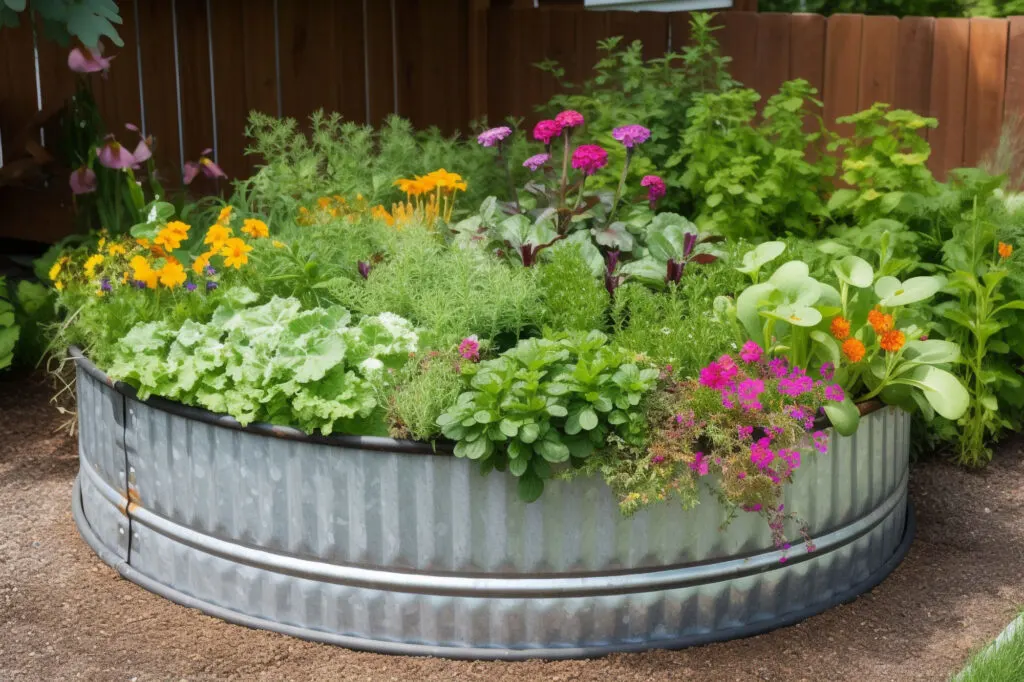
Are you a fan of farmhouse aesthetics? If you nodded yes, galvanized water troughs might be your perfect garden planter. Stock tanks make fantastic, sturdy raised garden beds with a rustic flair. They’re available at farm supply stores, or you may be able to buy some used tanks for cheap.
Make sure to drill drainage holes in the bottom so you don’t flood your plants. Stock tanks are meant to hold water, after all. 😉
One trick I often use when filling tall containers like stock tanks is to fill the bottom with the previous year’s yard waste and other compostable materials (fallen tree branches, grass clippings, etc) around my property, then fill soil in on top of that. It saves tons of money on expensive soil and compost.
8. Reclaimed wood growing beds
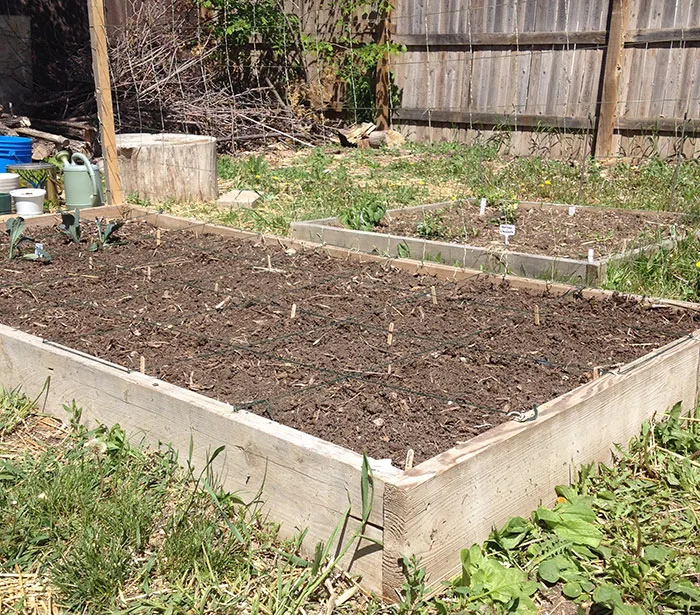
Next up, we’re going rustic with reclaimed wood. Wood offers a cost-effective and environmentally friendly option for a raised bed. You can often find scrap wood for cheap or free from construction sites, old barns, or specialty shops. Choose naturally rot-resistant wood types, like cedar or redwood, for durability.
Wood beds give you tons of versatility on the height and size of your raised beds. I made the beds above using leftover lumber from a construction project. The wood was free and made fast, convenient raised planters.
I also currently have an herb garden growing in simple boxes of various sizes built with leftover wood from our privacy fence. Like many of my garden beds, I set these right on top of the lawn, filled them with soil and compost, and they’ve been happily growing for years.
When building raised garden beds, it’s important to use a material that can withstand the elements and frequent watering. Pressure-treated lumber is a great option as it is designed to resist decay and insect damage, making it a durable choice for outdoor projects. But ultimately, the kind of wood you choose will depend on your needs and what you can find that suits your budget.
9. Repurposed dresser planter
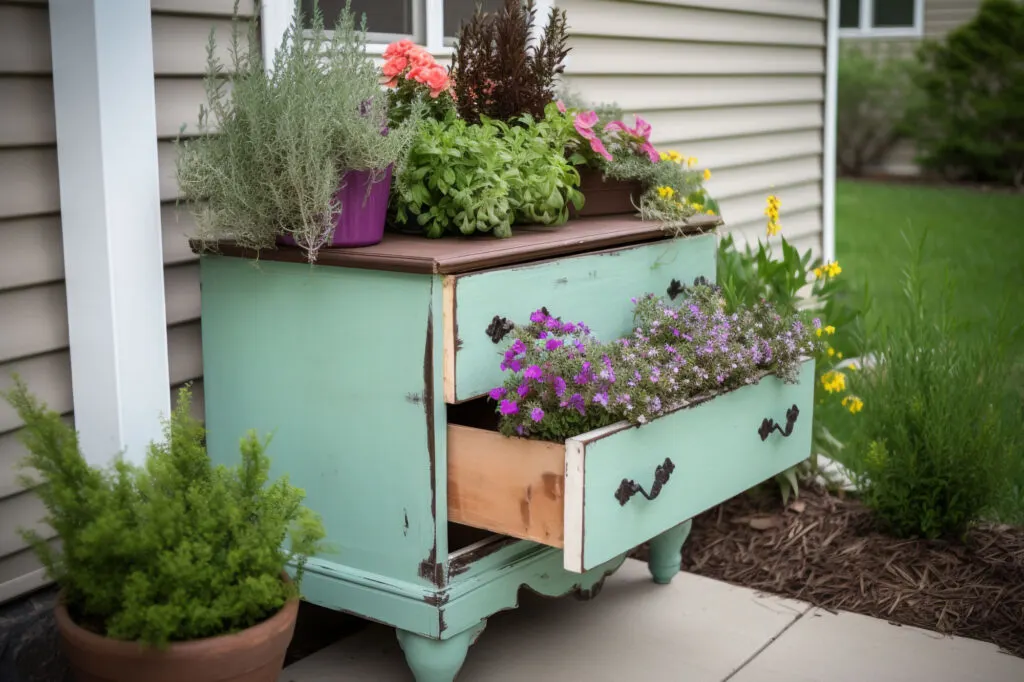
An old dresser can make a unique garden bed planter with the drawers serving as individual planting sections. Ensure the dresser is sturdy enough to withstand outdoor conditions, and it’s a good idea to line the drawers with landscape fabric to help hold the soil.
Another way to use an old dresser is to remove the drawers and lay the dresser flat to use it as a container with sections. It works! And the best part about repurposing dressers is there’s really no construction involved so it’s a great option for beginners.
10. Woven willow garden bed
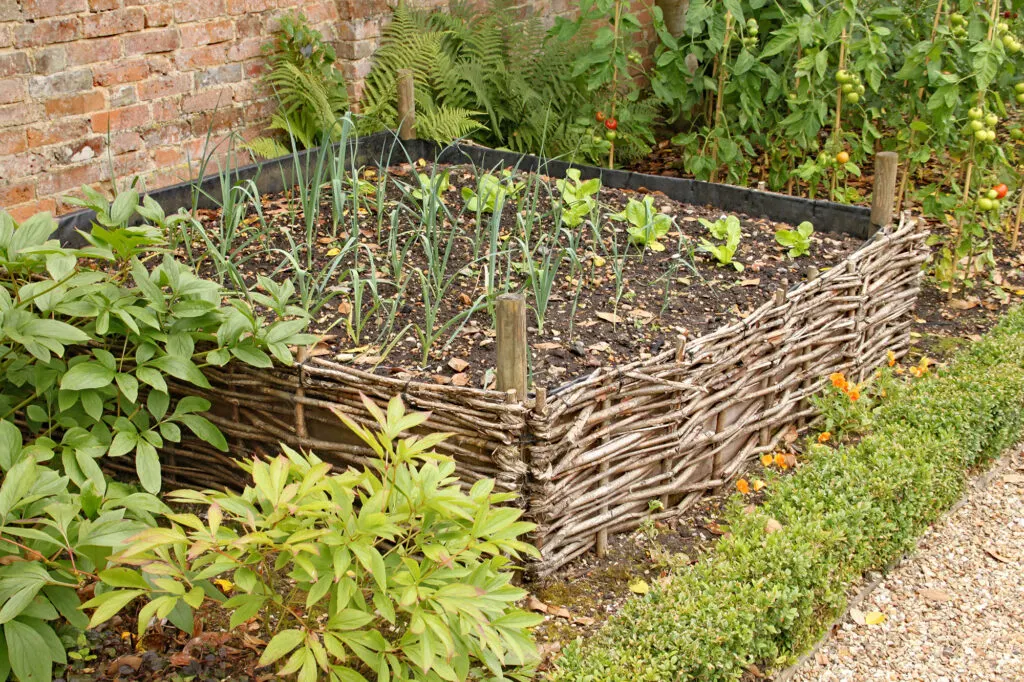
Woven willow beds are for anyone craving that whimsical, fairy-tale-esque vibe in their garden. Willow branches are flexible, which makes them perfect for weaving.
To build a willow bed, collect long, flexible willow branches. The fresher, the better. Drive sturdy stakes into the ground in the shape of your garden bed and weave the willow branches in and out of the stakes, creating a wall. Continue weaving the branches up until you reach your desired height. Fill the bed with soil and prepare for the neighborhood birds to start tweeting about your epic bed!
11. Stone garden beds
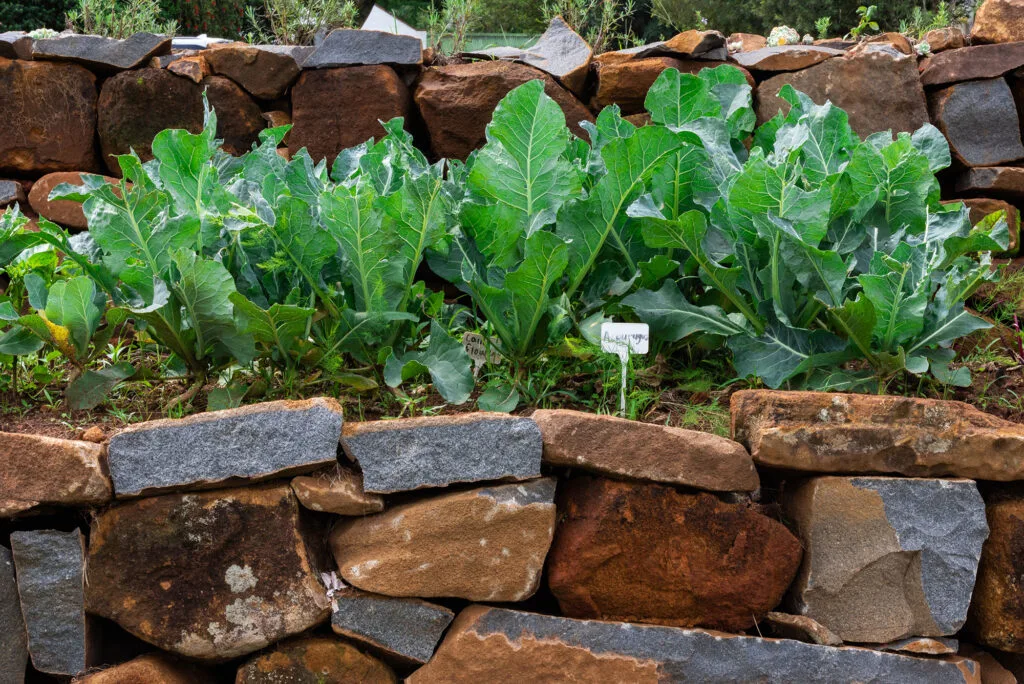
Rock wall garden beds are an awesome choice for a durable, low-maintenance, and incredibly attractive bed. They fit perfectly in a natural, rustic garden setting. Sourcing stones can be as simple as walking in the woods (just make sure you are allowed to take rocks from where you’re gathering them).
If you already have large stones on your property, this method is probably the cheapest way to get started with raised beds.
We had a property in the woods where the house sat at the top of a steep, rocky hill. We built terraced garden beds down the hill out of the rock on the property and they turned out beautiful. You’d think that stacked rocks might not hold soil very well, but they do! Sometimes it takes a little Tetris-like maneuvering to find the ideal fit, but it can certainly be done. It’s worth it for a free garden bed that’ll never degrade!
12. Old shelves and wood crates as garden beds
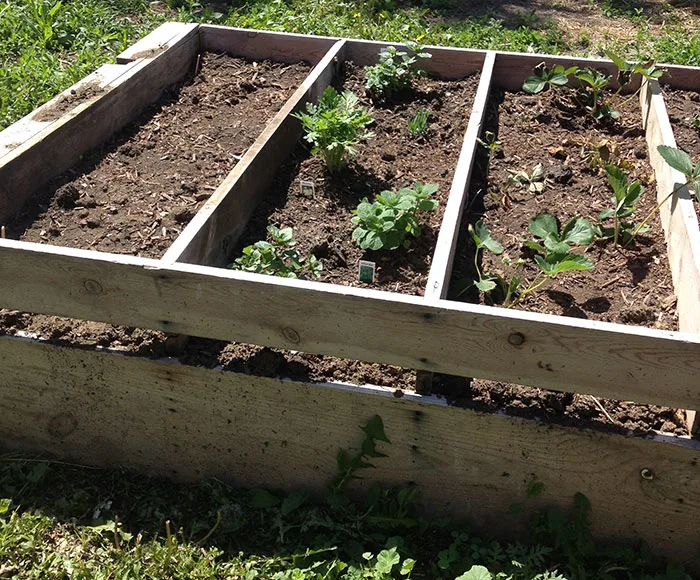
Once I got around to exploring the attic after I bought my house, I found it was full of heavy wooden packing crates from the previous owner, who was a soldier during WWII. He had his belongings shipped home from overseas in these, and they were way too cool to throw out. We repurposed several of them around the house as shelves, and I used a few in the yard.
I pulled the backboards off of one of the crates, laid it right over the grass in my yard, and filled it with a topsoil and compost mix. It made a good spot for strawberries and herbs, and in the two end slats, I put vining plants that can hang over the edges, like pumpkins and watermelons.
I also made shorter beds from a set of grungy old shelves I got from a nearby shop that was closing down. They had a cheap plywood backing that I pulled off before laying them down and filling them with dirt.
I made two 4′ x 8′ raised beds with these shelves and one 4′ x 4′ bed. Of course, these could be made easily and cheaply out of 2″ x 6″ boards if you don’t have shelves available. I was absolutely amazed at how much food I could grow in these beds.
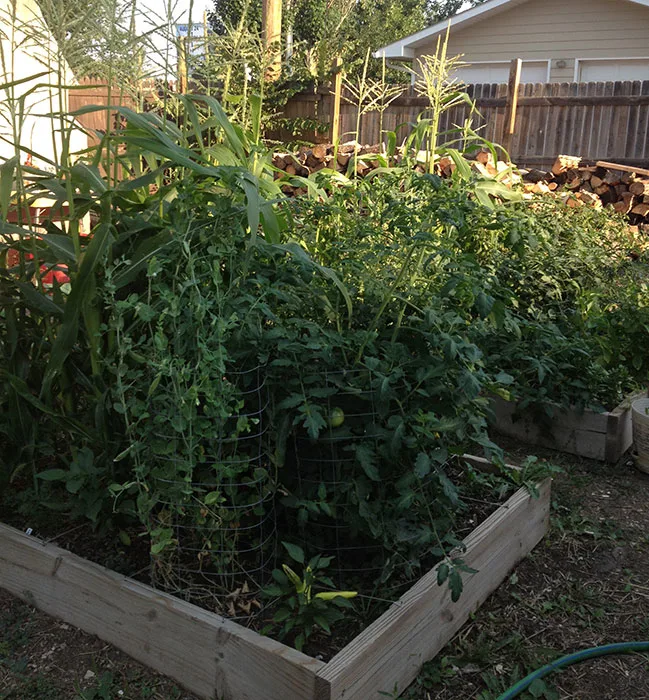
Look around at thrift shops, yard sales, and online classifies for old shelves. Or you might get lucky and find some in your attic!
13. Foam block planters

This idea is completely unconventional, but foam blocks can be turned into some really cool planters. While not always readily available, if you know where to look, you can often find foam like this, used for construction projects, for free. It’s light enough that the beds are easy to move around (when not full of dirt, of course) and durable enough to withstand weather and kids playing on them.
The planter above is made with large blocks of foam removed from a downtown building during a remodel. They were bound for the landfill, but we managed to get our hands on some. We pieced them together with spray foam and giant screws, then spread a thin layer of concrete over them to make them look like stone.
These held up surprisingly well, considering the variables in the weather in this area and the weight of the dirt. For years I used the planter above for tomatoes and cucumbers.
I used the same type of foam blocks to make these temporary raised flower beds in front of my house until I could get something more permanent in place. We buried the blocks in the ground about 4 inches deep, and they looked like they were made of stone even though they were very lightweight. I was quite surprised at how well they held up. They were there for three years before I took them out to redo my siding.
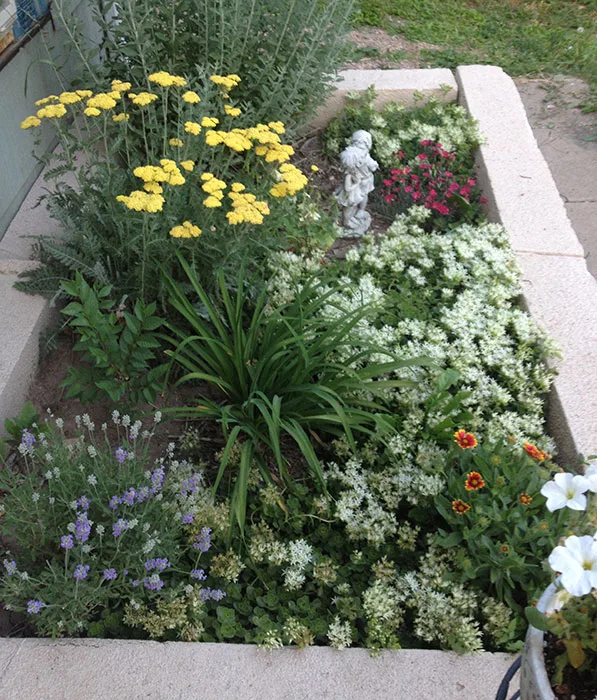
As with tires, I don’t know how safe it is to plant food plants in foam beds, so they may be best used for non-edible plants or as a temporary garden bed solution.
14. Upcycled plastic container garden beds
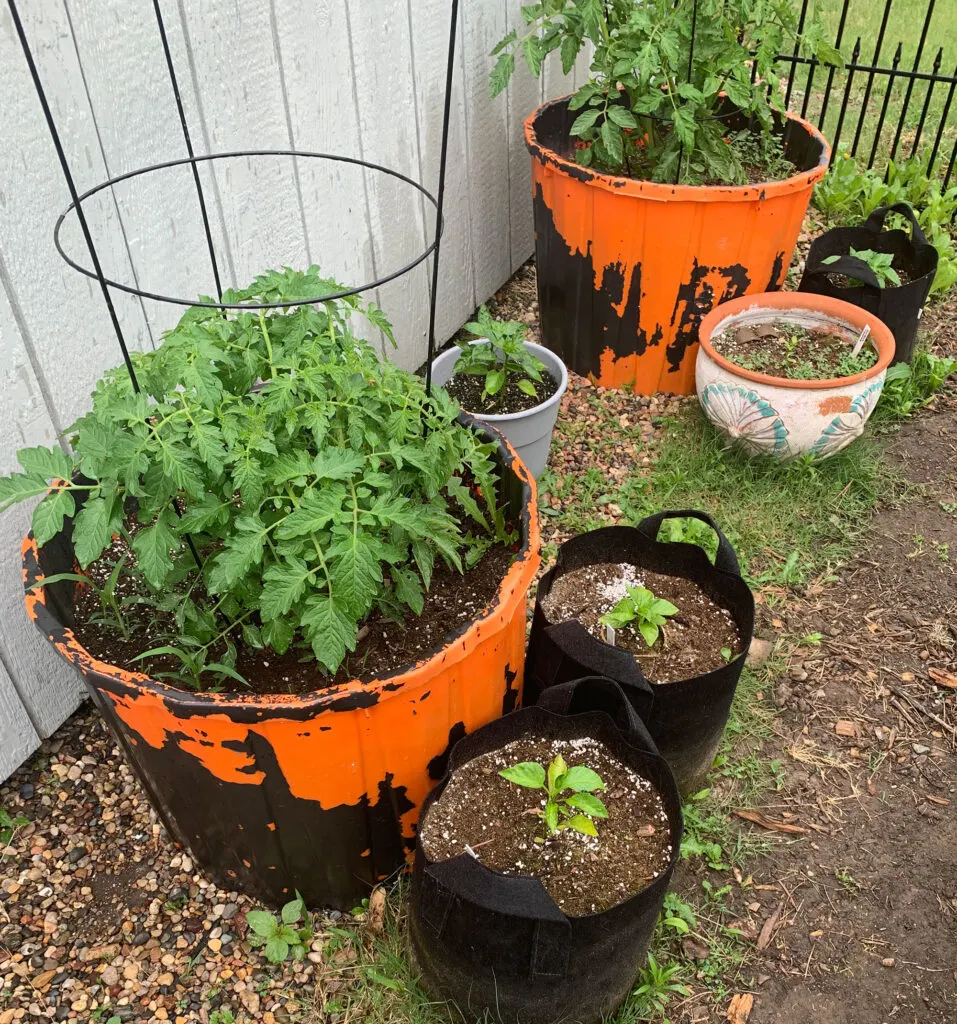
If you have an old plastic storage bin collecting dust, you can give it a new lease on life as a raised garden bed. This is a particularly good option for those with a smaller space for growing, like patios or balconies.
Other plastic containers can be great choices, too. Some of my most convenient planters are large heavy-duty plastic tubs that originally contained cattle feed (the ugly orange things in the above photo).
These things are so durable they’ve withstood years of abuse by our crazy weather with no apparent degradation. They’re the perfect size for large tomato plants and other things that need room to spread out in the garden.
15. Reusable shopping bags and soil sacks
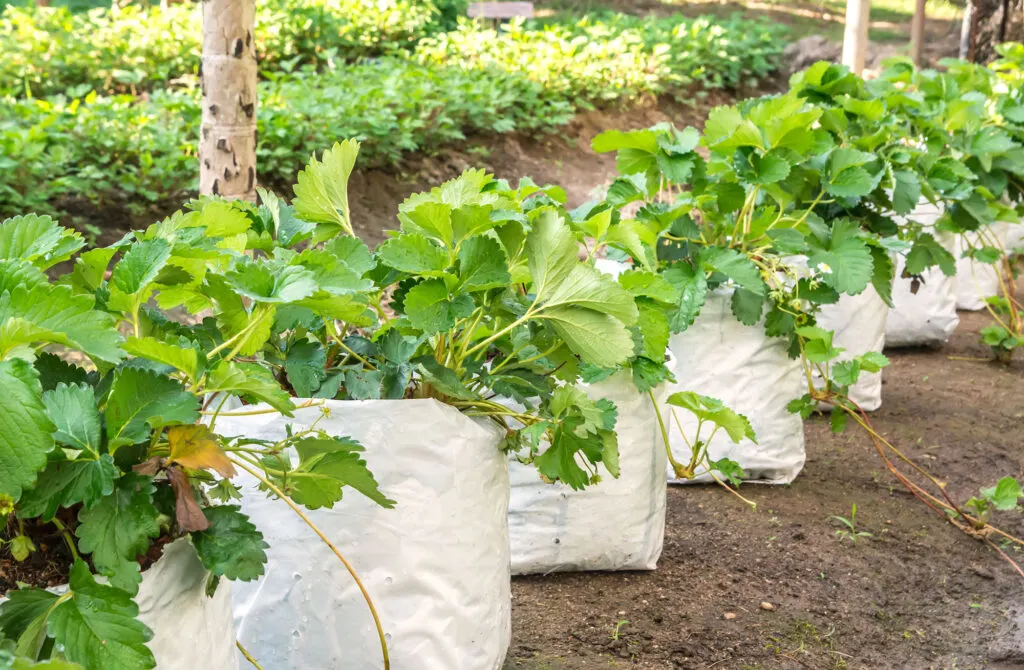
One creative way to upcycle your reusable shopping bags – or any other plastic or burlap sacks – is to turn them into quick and easy garden planters.
Simply fill the bag with soil, plant your favorite herbs, flowers, or vegetables, and hang them up on a fence or balcony railing. Larger bags can sit right on the ground. The bags are durable and can withstand outdoor elements, making them a perfect repurposing project.
If you’re short on time and space, you can plant directly into a bag of potting soil. Just cut a space out of the top of the bag for the plants and put a few small slits in the bottom for drainage.
This is a temporary but very convenient way to start your garden without worrying about tilling, weeding, or needing tons of space. This is another great way for a beginner gardener to try growing some plants before committing to a larger or more permanent growing space.
Quick tips on maintaining raised garden beds
Once you’ve built your raised garden bed, there are a few things you should do to maintain it properly to ensure your plants thrive:
- Soil Management: Regularly add compost and other organic matter to keep the soil fertile and well-structured. Healthy, rich soil goes a long way toward success in a garden.
- Watering Practices: Water deeply but infrequently (more frequently during hot, dry periods) to encourage roots to grow down into the soil. Mulch can help retain moisture.
- Regular checks for pests and disease: Inspect your plants regularly for any signs of pests or disease. Catching problems early can make them much easier to manage. Also practice crop rotation every couple of years to prevent plant-specific diseases from taking hold in your beds.
- Seasonal care: In colder regions, consider adding a cover to extend the growing season or a mulch layer to protect overwintering plants.
There’s a certain satisfaction in creating your own raised bed garden, especially when it’s done affordably with reclaimed materials. Not only do you end up with a functional addition to your garden, but also a unique feature that carries a story.
Whether it’s the dresser you’ve transformed into a multi-level floral display, or the pallets that now house your vibrant vegetable garden, these DIY projects breathe life and personality into your garden.
Remember that gardening is an experiment and a journey. Feel free to adapt and evolve your raised beds as you learn more about your plants and the unique conditions of your garden space. No matter the materials you use or the plants you grow, the most important thing is that you enjoy the process.
We hope this guide has inspired you to try out some DIY raised garden bed projects. We’d love to see what you create. Please share your photos, stories, and any new DIY ideas you might have.
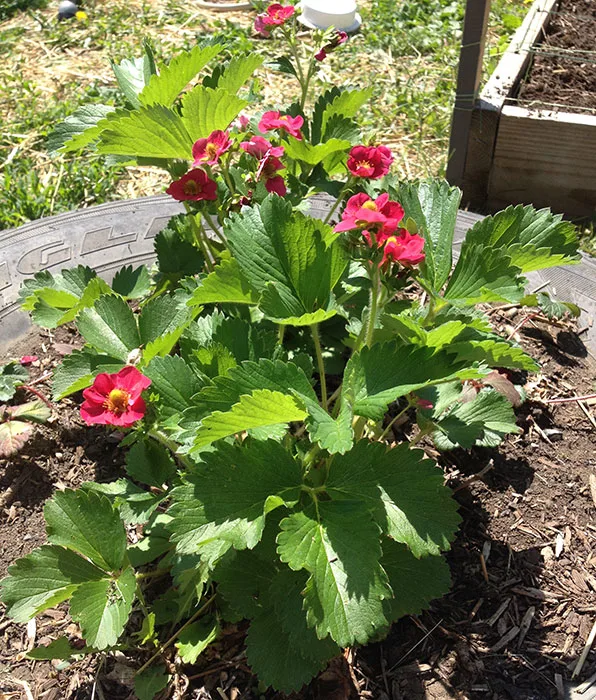
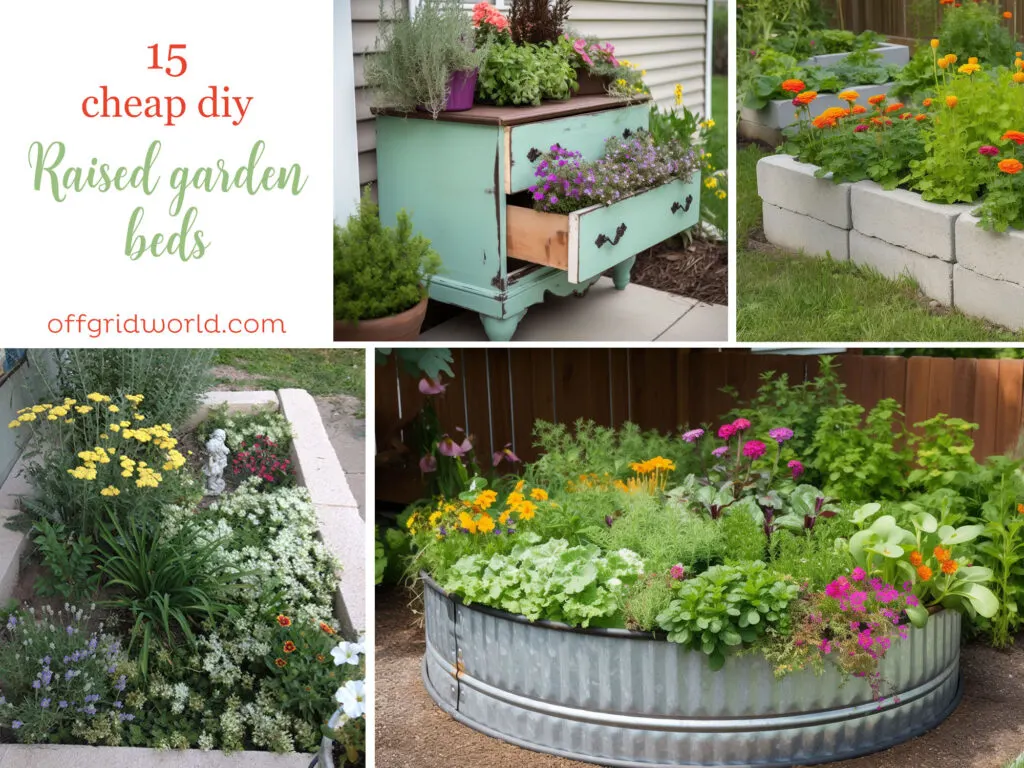
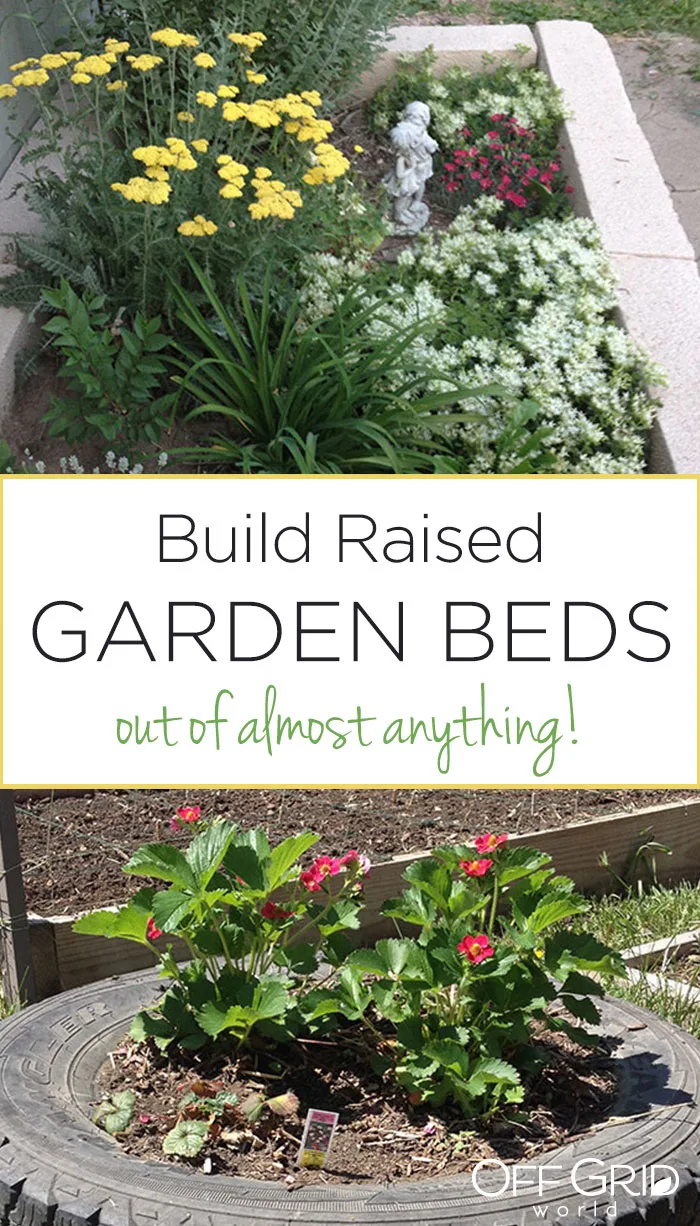

12 Amazing Cinder Block Raised Garden Beds - Off Grid World
Monday 14th of January 2019
[…] beds can be made from all kinds of materials, but I love the idea of using cinder blocks because they have many advantages of their own. […]